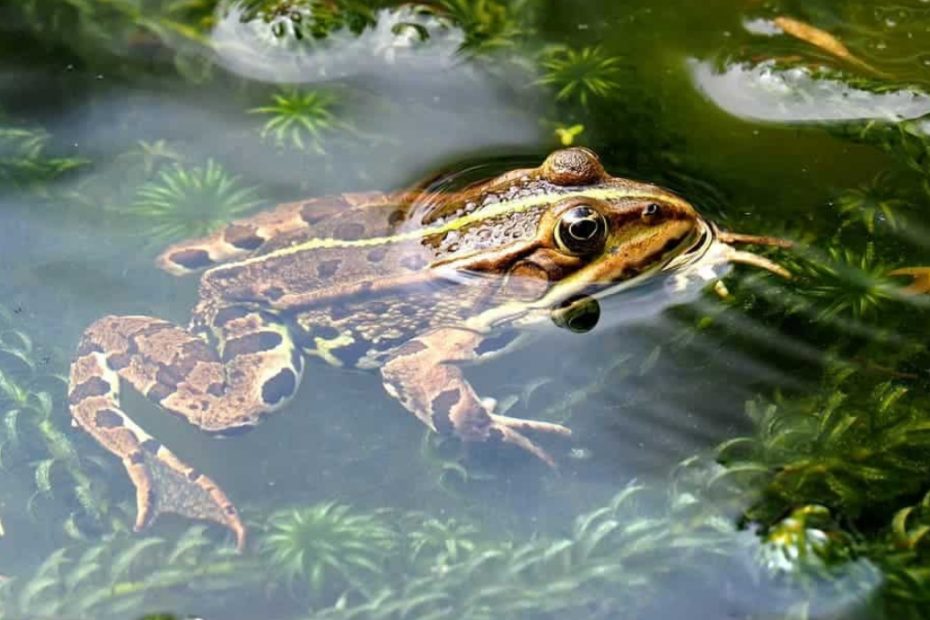Frogs, the fascinating amphibians, dwell in different ecosystems around the world in both aquatic and terrestrial environments. They require a unique set of elements to survive in the wild.
So, what do frogs need to survive? Sufficient water, an abundance of food, and a shelter devoid of predators to rest and lay eggs are the basic needs for a frog to survive. In an ideal place like this, frogs hibernate in the winter and estivate in the summer.
But that’s just a sketch. In this write-up, I’m going to explore them in vivid detail. So, Without further ado, let’s take the tour.
What Do Frogs Need to Survive?
Just like humans, frogs have some basic need to keep breathing out in the wild. There are not too many, yet not all surroundings can provide them. That is why you don’t see frogs at a sea beach.
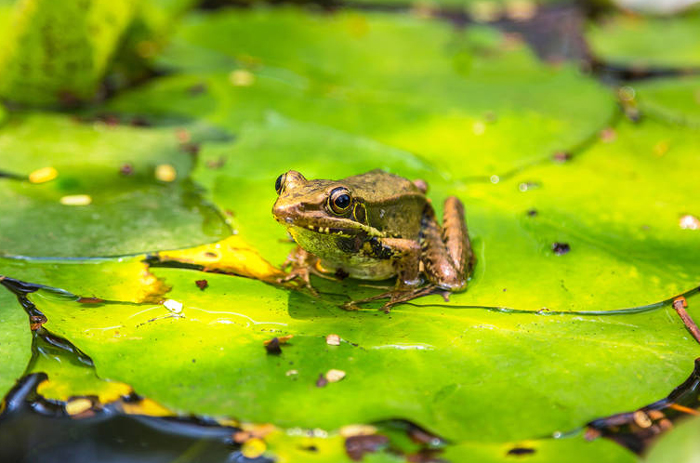
However, to survive, they need the following elements as follows.
Plenty of Food
Frogs require a rife of food at their disposal to survive, like any other animal. They manage food by hunting their prey.
By nature, frogs are carnivorous animals. A frog feeds on animal tissues that mostly include insects and mollusks. They consume small fish, bugs, and even smaller frogs. Yes, cannibalism is a natural phenomenon in the frog world.
At different stages of a frog’s life cycle, however, diet varies astonishingly.
Food at Egg Stage
Frogs’ life begins in the egg state when they only feed on the yolks from their eggs. They can’t move and don’t have a mouth as well. So, they get all the nutrition from naturally formed yolks to survive in the wild.
Tadpole Food Habit
Developing into tadpoles, they can now move around in the water. As a result, their diet changes to algae, plants, small insects, and phytoplankton. Surprisingly, tadpoles may eat other tadpoles if they lack nutrients from other foods. But they are omnivores at this stage.
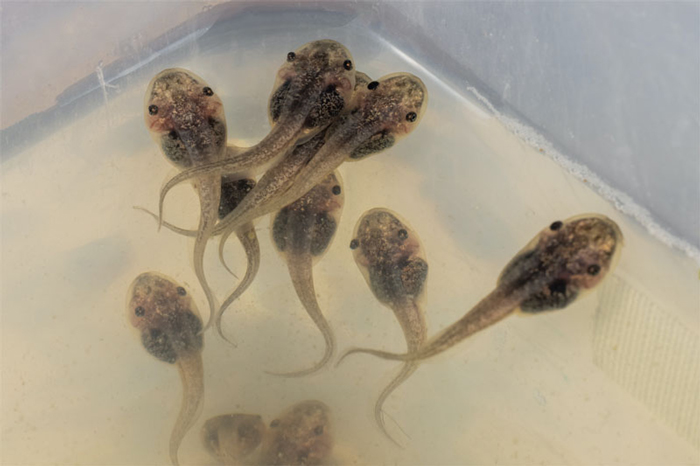
Food of an Adult Frog
Into their mature days, frogs primarily eat bugs like ants, bees, beetles, cockroaches, crickets, flies, grasshoppers, grubs, mosquitos, moths, slugs, worms, and larvae. Along with these, they eat small reptiles, including snakes, turtles, crocodiles, and even alligators.
Of course, these animals need to be smaller than the frog. Basically, they eat them when these reptiles are infants.
Surprised? Well, wait until I tell you more about their varied, complete diet.
Frogs also have a meal with amphibians and small mammals, such as baby mice and bats. Small fish like guppies and small birds have a special place in their food menu as well.
So, What do they not eat? Basically, everything a frog sees and small enough to fit in the mouth is its food because they are opportunistic feeders.
For your convenience, here’s a quick look at frog food:
| Frog Life Cycle | Food |
|---|---|
| Egg Stage | Feeds on the yolk of the egg |
| Tadpole | Algae, small plants, tiny insects and phytoplankton |
| Froglet | Small insects and worms, small fish and frogs |
| Matured Frog | Bugs such as ants, bees, crickets, and so much more. Reptiles that are smaller than frogs, including snakes, turtles, etc. Amphibians and small mammals. |
Fresh Water
No matter how great the food supply is in a location, a frog cannot survive without a source of clean water. It doesn’t mean that the water has to be clean looking; rather, it should have a neutral pH level (6.5-7.5) and minerals.
If the water is contaminated with chlorine, ammonia, or harmful metals, a frog will see its demise in no time. Salt water also is not ideal for a frog. It will get dehydrated in saline water.
Now, why is that?
A grown-up frog breathes through its lungs and skin as well. It breathes via the gills at the early stage of its life cycle. Just like a fish!
As it evolves, gills disappear and grow a pair of lungs in their place. You’ll see frogs spending time in the water for hours. That is because they take oxygen from the water through the skin.
The membranous frog skin takes up oxygen as soon as it touches water. But if the source is contaminated, it threatens the frog’s life. That is why frogs are seen in ponds, lakes, tropical rainforests, streams, rivers, and marshes.
Shelter
Frogs require a proper resting place that is moist and humid. Humidity should be between 70-100% with proper ventilation. The environmental temperature of frogs should be between 75 and 85 degrees F. The night temperature should not be less than 68 degrees F.
This is why the premises of a lake, pond, or stream are ideal places for a frog to take shelter. Also, the lodging should have a low number of predators for frogs to survive, as frogs are not at the top of the food chain.
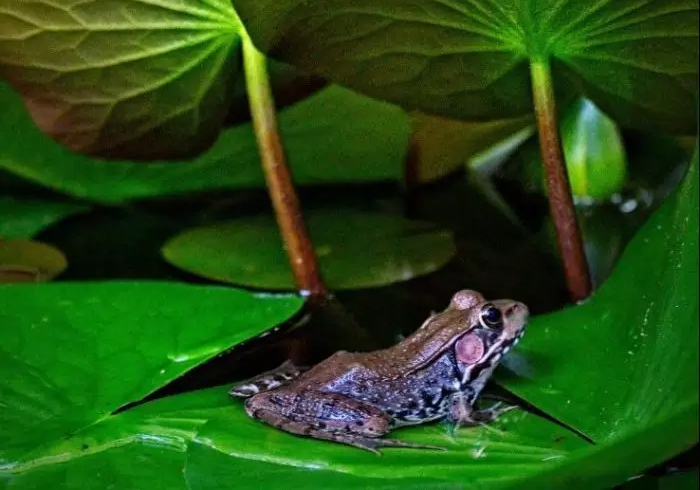
See, frogs rest differently than other animals. They inherit unique characteristics biologically. In winter, frogs hibernate to save energy. It’s a state where frogs do not even breathe.
They keep a high level of glucose in their body to make sure the organs do not shut down. They burrow down, hide under leaves, or lie below ponds or lakes.
Now, spring season is when the temperature rises, and frogs come out of hibernation. Around this time, they are typically found under leaves, debris, tree hollows, and rock crevices. They are often seen settling in man-made structures as well.
On hot summer days, however, they go into estivation. Dry weather is not ideal for frogs. So they dig deeper into the ground to come in contact with humidity. Like hibernation, the metabolic process slows down.
In the rainy season, frogs take shelter in vegetation and clefts to avoid being overly exposed to heavy rainfall. Sometimes, they hide in between rocks and burrow down in mud to protect themselves.
A Safe Breeding Location
Frogs lay their eggs in water. So, a secure location with no disruption is required for them to breed. Eggs need to be hatched properly without getting eaten by other species. That is why frogs need a safe place to reproduce.
Speaking of a breeding location, ponds, lakes, marshes, streams, and temporary rain pools are preferred by frogs to lay eggs. This is because water from these sources is clean, healthy, and not invaded by killers.
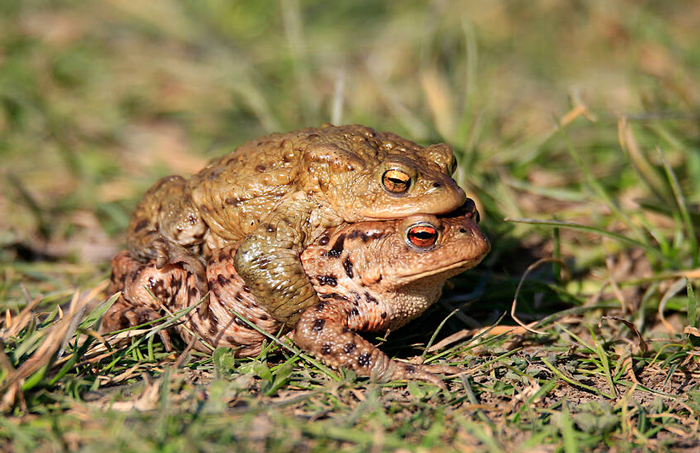
Growing into an adult frog starts from laying eggs in the safest location. Inside the eggs, the embryos develop, and slowly, cells begin to take shape. Then, they turn into tadpoles, which are like fish larvae. They swim around the fresh water and breathe through the gills.
Just after that, through the metamorphosis process, tadpoles grow legs and lungs, lose the tail, and the shape of the mouth changes. They eventually evolve into a mini frog, also known as a froglet.
And over time, they turn into adult frogs. A safe location facilitates the entire life cycle of a frog.
Can You Keep a Wild Frog As a Pet?
Unlike high-maintenance animals such as French Bulldogs, parrots, turtles, rabbits, etc., keeping a wild frog as a pet is possible and easy. Also, the entertaining nature and cuteness of frogs’ appearance make them a proper candidate for a pet. So you can keep a frog any day.
But should you own a wild frog as a pet?
You see, some wild frogs come out as great pets, while others don’t. You should leave a wild animal alone, even if it is the most peaceful species.
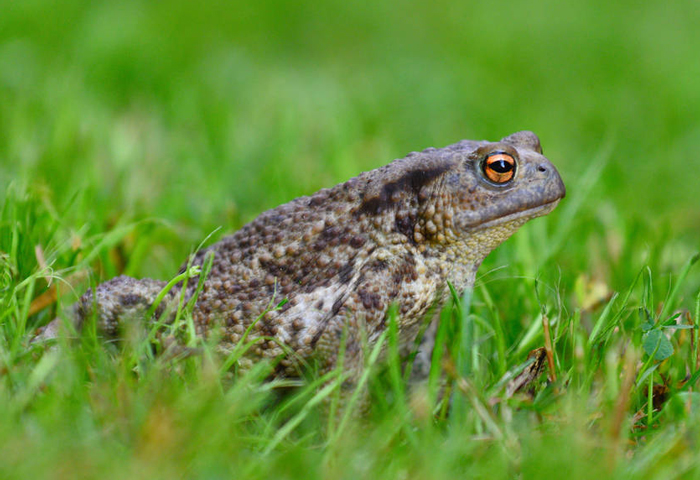
Not only that, but you never know what these creatures can bring with them. They can be infected with diseases like salmonella. On top of that, some frogs are poisonous. They can harm anyone who touches their skin.
Besides, viral human diseases can affect them as well. So, you’re putting yourself and the poor little creature in danger. Furthermore, it is cruel to a frog to abduct it from the friendly natural environment.
Above all, a wild frog, when omitted from its natural habitat, may not adapt to captivity. It’s challenging to replicate nature under the roof.
How to Take Care of a Wild Frog As a Pet?
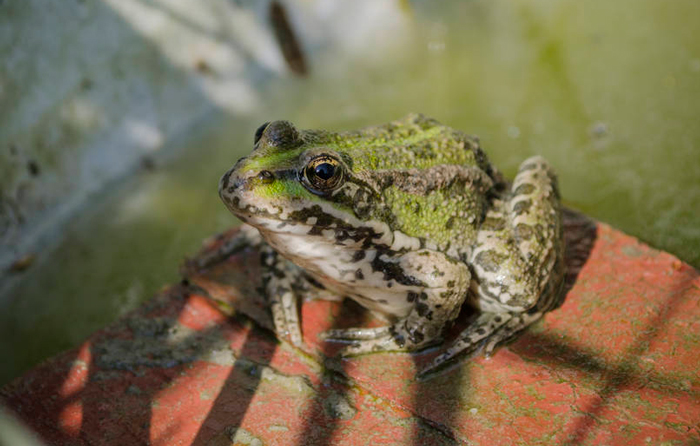
Once you get a frog as a pet, know that it is the most trouble-free animal to take care of. But just because they are easygoing doesn’t mean you can neglect them. You need to provide proper habitat and make a cleaning and feeding schedule, just like any other reptile or amphibian.
Here’s a quick look at how you can take care of a wild frog as a pet:
- Create a proper enclosure. You can use glass tanks or a clear plastic bin. Plastic bins hold humidity better than glass cages. For each frog, add 1 square foot to the dimension of the tank.
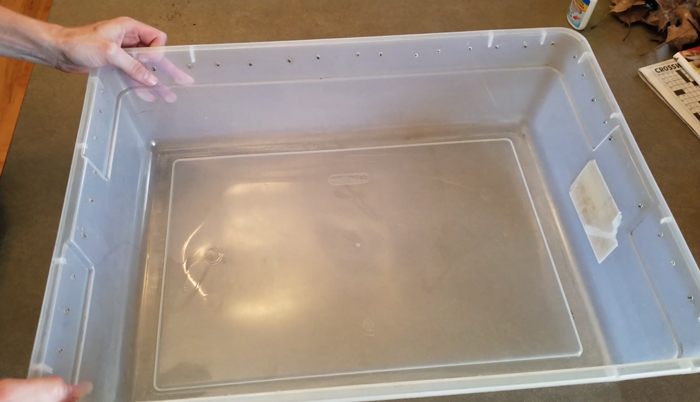
- Produce air ventilation inside the frog tank. You can drill holes in all four side walls of the enclosure. Make sure the entire contraption has a lid. So that frogs don’t jump out and go around your house or escape.
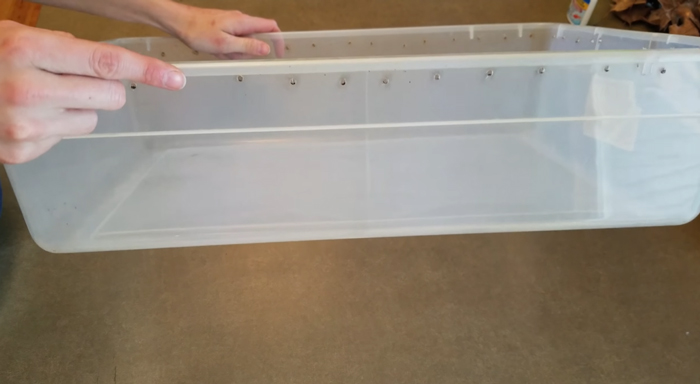
- Fill up the bottom of the tank with a substrate. Cypress and eco earth mixture is a good option that holds moisture. Fill enough so that the frogs burrow down. Decorate further as needed with something like Moss, half trunk, etc.
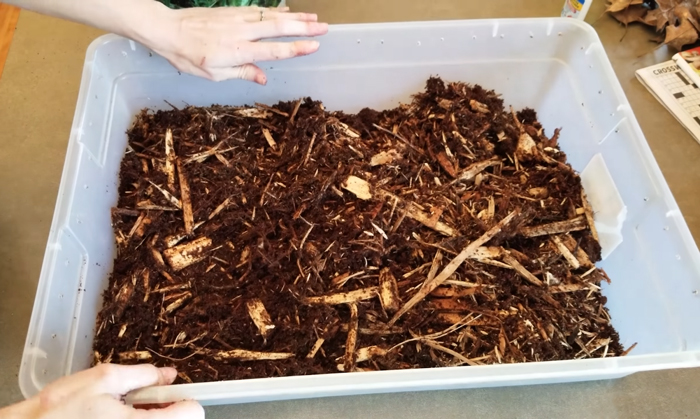
- Place a water dish. Fill it up with bottled water or de-chlorinated tap water. I don’t recommend distilled water as they don’t have essential minerals. Also, soak the bottom stuff inside the tank.
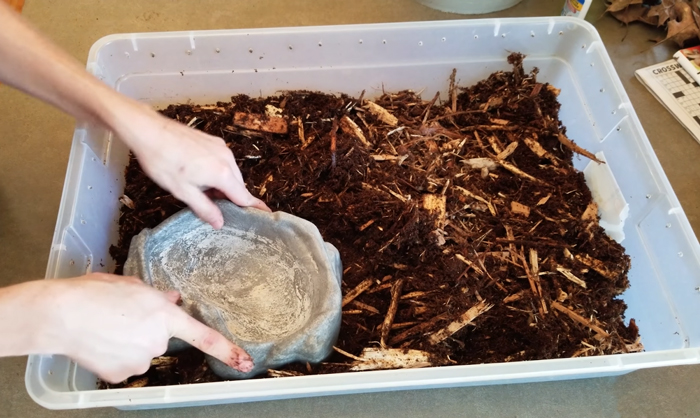
- Keep the frogs at room temperature of 70-75℉. Frogs require minimal maintenance. They do not require any special lighting or other stuff. Just rehydrate the tank substrates when they are dry.
- Accommodate the day-night cycle by placing the pet frog’s case where natural light reaches. So that when it’s dark outside, they’ll automatically adapt to the night ambiance.
- Feed your pet frogs every two to three days with insects such as flies and moths, crickets, cockroaches, red runners, earthworms, etc. Dust your frog’s food with calcium powder to meet the need for this essential metal in the body.
- Feed them live insects with a size of the length between their eyes to prevent any impaction issues.
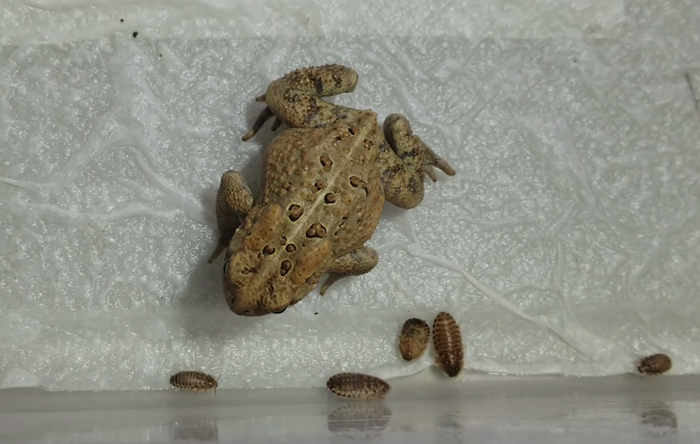
Image Source: https://youtu.be/q918x4LLh80?feature=shared
While delving into the essential requirements for frog survival, it’s equally enlightening to discover how to make your surroundings conducive for these amphibians. Our in-depth guide on what attracts frogs and toads to gardens, yards, and ponds is a comprehensive resource to help you create the perfect habitat. Moreover, if you’re a true frog enthusiast, don’t forget to mark your calendar for National Frog Day, a day dedicated to celebrating and appreciating these remarkable creatures.Frequently Asked Questions
When digging into the matter of frogs’ need for survival, I’ve found some interesting queries that swirl around most people’s minds. Below, I’ve answered such questions.
Keeping frogs in captivity can be cruel if they are not looked after properly. To keep them as pets, you must ensure a natural environmental condition with the right amount of humidity and heat. Feed them live foods 3-4 times weekly and supply clean water.
Frogs need a similar environment to survive in a tank or artificial enclosure. It has to be moist or damp but not completely soaking wet. Inside the tank, there should be decorations such as sand, gravel trunks, and moss that replicate a natural habitat for the frog. Also, the tank should be clear so that the frogs can have the day and night circle accurately.
A wild frog lives up to 12 years. But in captivity, their lifespan can go up to 20 years. Frogs’ life span depends on factors like food availability, predators, size, gender, and the environment.
Closing Thoughts
Frogs, in general, are comfortable as long as they have access to sufficient and suitable food sources, fresh water, shelter, and a place to reproduce. Even they are great pets. Some essential maintenance is required, mostly feeding them 3-4 times a week.
Now, for people to keep these enchanting creatures as pets, it’s crucial to replicate the moist and damp environment. Otherwise, frogs will not survive in a home condition. In addition, supply proper foods, maintain the correct warmth and humidity, and replicate the day-night cycle correctly.

Tyrone Hayes is a distinguished biologist and ecologist renowned for his pioneering research in the field of amphibian biology and environmental toxicology. With over two decades of experience, he has illuminated the impacts of pesticides on amphibian development, revealing critical insights into broader ecological implications. Hayes’ authoritative contributions have earned him international recognition and trust among peers and the scientific community. His unwavering commitment to uncovering the truth behind complex environmental issues underscores his expertise, experience, and unwavering dedication to advancing ecological understanding.
